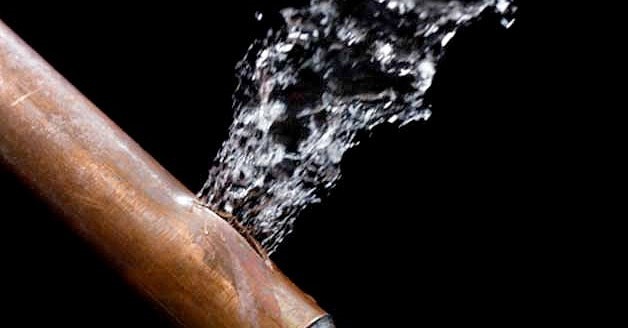6 Proven Methods to Spot Covert Water Line Leaks Secretly
6 Proven Methods to Spot Covert Water Line Leaks Secretly
Blog Article
Presented here down the page you can locate lots of extremely good information and facts concerning Leaking water lines.

Early detection of dripping water lines can mitigate a possible catastrophe. Aside from saving you money, it will decrease the aggravation and disappointment. The minute you locate a leakage, calling your plumber for fixings is the best option. However, some small water leakages may not be visible. If you can not find it with your nude eyes, here are some hacks that help.
1. Analyze the Water Meter
Every house has a water meter. Checking it is a guaranteed way that helps you find leakages. For starters, turn off all the water sources. Make sure no one will flush, utilize the tap, shower, run the washing maker or dish washer. From there, go to the meter and watch if it will certainly alter. Given that no person is utilizing it, there must be no motions. That indicates a fast-moving leakage if it moves. If you find no changes, wait an hour or two as well as examine back once more. This means you might have a slow leak that can even be underground.
2. Examine Water Consumption
Evaluate your water expenses as well as track your water intake. As the one paying it, you need to see if there are any inconsistencies. If you detect sudden changes, in spite of your intake coinciding, it means that you have leaks in your plumbing system. Bear in mind, your water costs need to fall under the same array every month. An abrupt spike in your expense suggests a fast-moving leak.
A constant increase every month, even with the very same routines, reveals you have a sluggish leakage that's additionally slowly escalating. Call a plumber to thoroughly check your residential or commercial property, particularly if you really feel a warm area on your floor with piping underneath.
3. Do a Food Coloring Test
When it pertains to water usage, 30% comes from toilets. Test to see if they are running correctly. Decrease specks of food color in the container as well as wait 10 minutes. If the shade somehow infiltrates your bowl during that time without flushing, there's a leakage in between the container and bowl.
4. Asses Outside Lines
Don't forget to examine your exterior water lines as well. Should water permeate out of the connection, you have a loosened rubber gasket. One small leakage can lose heaps of water as well as increase your water expense.
5. Check and Assess the Situation
Home owners should make it a habit to inspect under the sink counters and also also inside cupboards for any kind of bad odor or mold and mildew growth. These two warnings suggest a leakage so prompt focus is required. Doing routine evaluations, also bi-annually, can conserve you from a major problem.
Extra significantly, if you recognize your home is already old, maintain a watchful eye on your heating systems, hoses, pipes etc. Check for discolorations as well as compromising as many devices and pipes have a life span. They will additionally naturally weaken as a result of damage. If you presume dripping water lines in your plumbing system, do not wait on it to rise. Call a professional plumber immediately so you do not wind up with a horrible mess in your house.
Early detection of leaking water lines can alleviate a possible catastrophe. Some small water leakages may not be visible. Examining it is a surefire means that assists you find leakages. One tiny leakage can lose heaps of water and increase your water costs.
If you believe leaking water lines in your plumbing system, don't wait for it to rise.
WARNING SIGNS OF WATER LEAKAGE BEHIND THE WALL
PERSISTENT MUSTY ODORS
As water slowly drips from a leaky pipe inside the wall, flooring and sheetrock stay damp and develop an odor similar to wet cardboard. It generates a musty smell that can help you find hidden leaks.
MOLD IN UNUSUAL AREAS
Mold usually grows in wet areas like kitchens, baths and laundry rooms. If you spot the stuff on walls or baseboards in other rooms of the house, it’s a good indicator of undetected water leaks.
STAINS THAT GROW
When mold thrives around a leaky pipe, it sometimes takes hold on the inside surface of the affected wall. A growing stain on otherwise clean sheetrock is often your sign of a hidden plumbing problem.
PEELING OR BUBBLING WALLPAPER / PAINT
This clue is easy to miss in rooms that don’t get much use. When you see wallpaper separating along seams or paint bubbling or flaking off the wall, blame sheetrock that stays wet because of an undetected leak.
BUCKLED CEILINGS AND STAINED FLOORS
If ceilings or floors in bathrooms, kitchens or laundry areas develop structural problems, don’t rule out constant damp inside the walls. Wet sheetrock can affect adjacent framing, flooring and ceilings.
https://www.servicemasterbyzaba.com/blog/how-to-detect-water-leakage-in-walls/

I'm certainly very involved in Leaking water lines and I'm hoping you liked our blog entry. Loved our piece? Please share it. Help someone else find it. Thank you for going through it.
24/7 plumbers for emergencies. Report this page